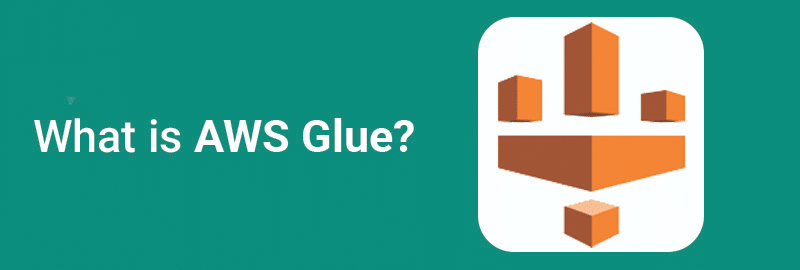
Here are some of the top 30 AWS Glue interview questions with answers:
1. What is AWS Glue?

AWS Glue is a serverless data integration service that makes it easier to discover, prepare, move, and integrate data from multiple sources for analytics, machine learning (ML), and application development.
2. What are the benefits of using AWS Glue?
Ans:- Some of the benefits of using AWS Glue include:
- It is serverless, so you don’t have to manage any infrastructure.
- It is scalable, so you can easily handle large amounts of data.
- It is easy to use, even for non-technical users.
- It provides a wide range of features for data integration, including crawlers, jobs, and triggers.
3. What are the components of AWS Glue?
Ans:- The components of AWS Glue are:
- Data Catalog: The Data Catalog is a central repository for metadata about your data sources.
- Crawlers: Crawlers discover and catalog data sources in your AWS account.
- Jobs: Jobs are (Extract, Transform, and Load) workflows that use the Data Catalog to process data.
- Triggers: Triggers automate the execution of jobs based on events, such as the arrival of new data.
4. What are the different types of jobs in AWS Glue?
Ans:- There are two types of jobs in AWS Glue:
- ETL jobs: ETL jobs extract data from one or more sources, transform it, and load it into a target data store.
- Spark jobs: Spark jobs are Apache Spark jobs that can be run on AWS Glue.
5. What are the different types of crawlers in AWS Glue?
Ans:- There are two types of crawlers in AWS Glue:
- Full crawlers: Full crawlers crawl all of the data in a data source.
- Incremental crawlers: Incremental crawlers crawl only the data that has changed since the last crawl.
6. How does AWS Glue pricing work?
Ans:- AWS Glue pricing is based on the following factors:
- The amount of data that is processed by AWS Glue.
- The number of crawlers and jobs that are run.
- The amount of time that AWS Glue is used.
7. What are some of the best practices for using AWS Glue?
Ans:- Some of the best practices for using AWS Glue include:
- Use the Data Catalog to organize your data sources.
- Use crawlers to discover and catalog your data sources.
- Use jobs to process your data.
- Use triggers to automate the execution of jobs.
- Monitor the performance of your jobs.
8. What are some of the limitations of AWS Glue?
Ans:- Some of the limitations of AWS Glue include:
- It is not a full-featured ETL tool.
- It is not suitable for all types of data integration tasks.
- It can be expensive for large-scale data integration projects.
9. What are some of the alternatives to AWS Glue?
Ans:- Some of the alternatives to AWS Glue include:
- Apache Airflow
- IBM DataStage
- Informatica PowerCenter
- Talend Open Studio
10. What are some of the use cases for AWS Glue?
Ans:- Some of the use cases for AWS Glue include:
- Extracting data from data lakes.
- Loading data into data warehouses.
- Cleaning and transforming data.
- Integrating data from multiple sources.
- Building machine learning models.
11. What is the purpose of the GlueContext in AWS Glue?
Ans:- GlueContext is the entry point for creating Glue DynamicFrames and performing ETL operations in AWS Glue scripts.
12. How can you schedule an AWS Glue Job to run at specific intervals?
Ans:- You can use the AWS Glue console or API to set up schedules for your Glue Jobs.
13. How does AWS Glue handle data partitioning?
Ans:- AWS Glue supports data partitioning, which helps optimize data processing and query performance by organizing data into partitions based on specific columns.
14. What is the difference between AWS Glue and Amazon Redshift?
Ans:- AWS Glue is an ETL service that prepares and moves data, while Amazon Redshift is a data warehousing service for querying and analyzing large datasets.
15. Can AWS Glue be used with on-premises data sources?
Ans:- AWS Glue is primarily designed for cloud-based data sources, but it can also be used with on-premises data by using Glue connectors.
16. How can you optimize AWS Glue job performance?
Ans:- You can optimize performance by selecting appropriate instance types, tuning the number of worker nodes, and optimizing ETL code.
17. What is the Glue DataBrew service?
Ans:- Glue DataBrew is a visual data preparation tool that allows users to clean and transform data without writing code.
18. What are Glue ETL endpoints used for?
Ans:- Glue ETL endpoints provide a private network connection for securely running and testing Glue ETL jobs within a VPC.
19. How can you handle schema changes in ETL jobs using AWS Glue?
Ans:- AWS Glue provides tools to handle schema changes, such as supporting schema evolution and using the schema inference capability of crawlers.
20. What is the difference between GlueContext and SparkContext in AWS Glue?
Ans:- GlueContext is an extension of SparkContext that provides additional features specific to AWS Glue, such as Glue DynamicFrames.
21. What is the AWS Glue database?
Ans:- The AWS Glue Data Catalog database is a container that houses tables. You utilize databases to categorize your tables. When you run a crawler or manually add a table, you establish a database. All of your databases are listed in the AWS Glue console’s database list.
22. What programming language is used to write ETL code for AWS Glue?
Ans:- Scala or Python can write ETL code for AWS Glue.
23. What is the AWS Glue Job system?
Ans:- AWS Glue Jobs is a managed platform for orchestrating your ETL workflow. In AWS Glue, you may construct jobs to automate the scripts you use to extract, transform, and transport data to various places. Jobs can be scheduled and chained, or events like new data arrival can trigger them.
24. Does AWS Glue use EMR?
Ans:- The AWS Glue Data Catalog integrates with Amazon EMR, Amazon RDS, Amazon Redshift, Redshift Spectrum, Athena, and any application compatible with the Apache Hive megastore, providing a consistent metadata repository across several data sources and data formats.
Advanced AWS Glue interview questions with answers
25. Does AWS Glue have a no-code interface for visual ETL?
Ans:- Yes. AWS Glue Studio is a graphical tool for creating Glue jobs that process data. AWS Glue studio will produce Apache Spark code on your behalf once you’ve defined the flow of your data sources, transformations, and targets in the visual interface.
26. How do I query metadata in Athena?
Ans:- AWS Glue metadata such as databases, tables, partitions, and columns may be queried using Athena. Individual hive DDL commands can be used to extract metadata information from Athena for specific databases, tables, views, partitions, and columns, but the results are not tabular.
27. What is the general workflow for how a Crawler populates the AWS Glue Data Catalog?
Ans:- The usual method for populating the AWS Glue Data Catalog via a crawler is as follows:
- To deduce the format and schema of your data, a crawler runs any custom classifiers you specify. Custom classifiers are programmed by you and run in the order you specify.
- A schema is created using the first custom classifier that correctly recognizes your data structure. Lower-ranking custom classifiers are ignored.
- Built-in classifiers attempt to identify your data schema if no custom classifier matches it. One that acknowledges JSON is an example of a built-in classifier.
- The crawler accesses the data storage. Connection attributes are required for crawler access to some data repositories.
- Your data will be given an inferred schema.
- The crawler populates the data catalog. A table description is a piece of metadata that defines your data store’s data. The table is kept in the Data Catalog, a database container for tables. The label generated by the classifier that inferred the table schema is the table’s classification attribute.
28. How to customize the ETL code generated by AWS Glue?
Ans:- Scala or Python code is generated via the AWS Glue ETL script suggestion engine. It makes use of Glue’s ETL framework to manage task execution and facilitate access to data sources. One can use AWS Glue’s library to write ETL code, or you can use inline editing using the AWS Glue Console script editor to write arbitrary code in Scala or Python, which you can then download and modify in your IDE.
29. How to build an end-to-end ETL workflow using multiple jobs in AWS Glue?
Ans:- AWS Glue includes a sophisticated set of orchestration features that allow you to handle dependencies between numerous tasks to design end-to-end ETL processes; in addition to the ETL library and code generation, AWS Glue ETL jobs can be scheduled or triggered when they finish. Several jobs can be activated simultaneously or sequentially by triggering them on a task completion event.
30. How does AWS Glue monitor dependencies?
Ans:- AWS Glue uses triggers to handle dependencies among two or more activities or external events. Triggers can both watch and invoke jobs. The three options are a scheduled trigger, which runs jobs regularly, an on-demand trigger, or a job completion trigger.